This is the sixth in a series of posts on the Sony a9. The series starts here.
Here’s how I measure the pixel response non-uniformity (PRNU) of a camera. Set the camera up aimed at a white target. Light the target with a pair of LED panels set to 5000K. Defocus the lens; I just put the target a meter away and set the lens to infinity. Stop it down far enough to get fairly even sensor illumination. Set the shutter speed for an average exposure about a stop below clipping. Make 128 exposures about one second apart. Convertall the images to DNG format with Adobe DNG converter. Run a Matlab PRNU program that calls DCRAW to decode each color plane of each image, crops as requested, and averages all the images, keeping track of some stats as it goes. The stat that we’re interested in is the standard deviation of the cropped averaged image after equalization with a 99×99 kernel designed to minimize errors due to light falloff or lighting deviations from flatness.
Here’s what it looks like for the a9 at ISO 100 with the EFCS on:
You can see all of the raw channels approaching an asymptote of between 0.3% and 0.4%. This is a not a lot of PRNU, but almost twice as much as the Nikon D5.
With electronic shutter:
About the same. The red raw channel is a bit worse. The reason for the differences between the raw channels is usually that each channel had a different average illumination. Note the the two green channels are on top of each other.
I’d show you the ISO 640 images — but they’d be pretty boring. Instead, here’s a plot that shows you what each test converged to:
You can see that the ISO 640 results are worse, but not much worse. ISO 640 is the lowest ISO where the a9 operates at maximum conversion gain. Below that, there are capacitors switched in to lower the conversion gain, and it looks like they also smooth out the PRNU a tad.
Let’s look in the frequency domain to see if there are some periodicities These are with no cropping, so there is a gradual slope due to the unevenness of the lighting. .
The spikiness of the red lines indicates that there is some kind of periodic patterning in the vertical direction. The patterning appears to be worse in the red and blue raw planes.
Looking at the same set of frequency analyses at ISO 640:
Now we see a spike in the blue curves, indicating some periodic patterning at a bit less than the Nyquist rate, which occurs when the frequency, f, is half the sampling frequency, fs.
If you want to see what that looks like in an image, here is one that has been heavily equalized:
This is a blowup of the red raw channel of the ISO 100 set with the electronic shutter on. Here’s the frequency plot for that case:
Lloyd Chambers has identified something that looks a lot like this in his a9 testing. My results are different, in the following ways:
- I’m looking a raw channels, and he’s looking at editing color spaces after demosaicing.
- I have averaged out the photon noise by using 128 captures to construct the images.
- I have subjected the grayscale image that I presented for you to look at to aggressive equalization.
Still, it’s entirely possible that we’re looking at the same thing. The level of the PRNU is so low that I expect photono noise to cover up the patterning in most circumstances.
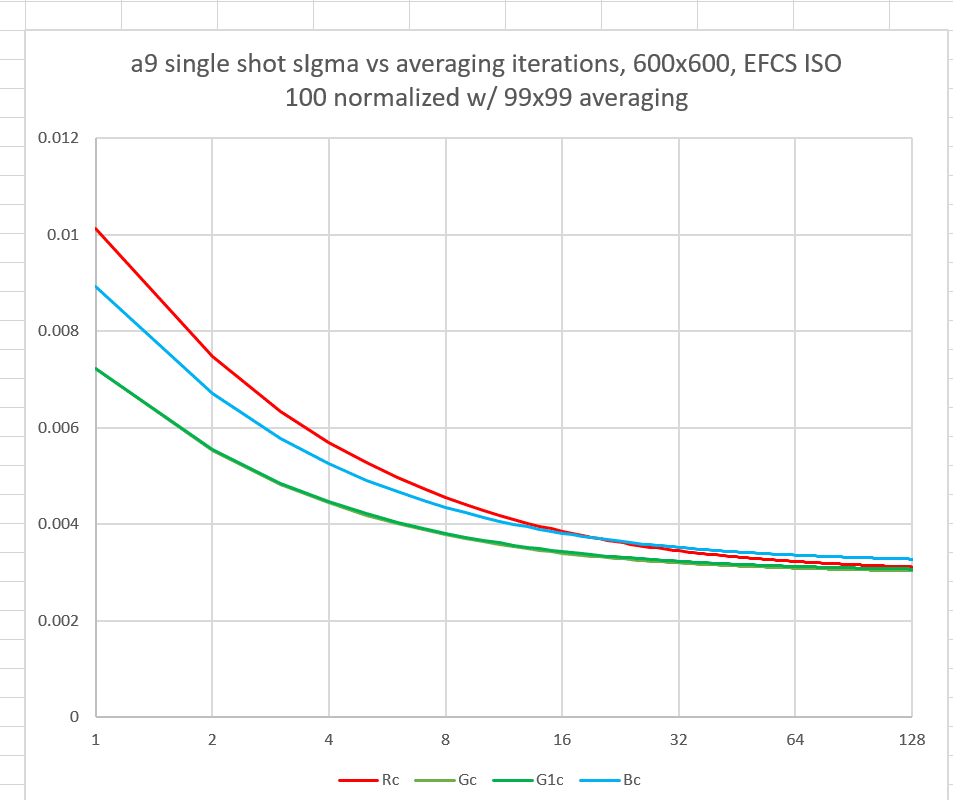
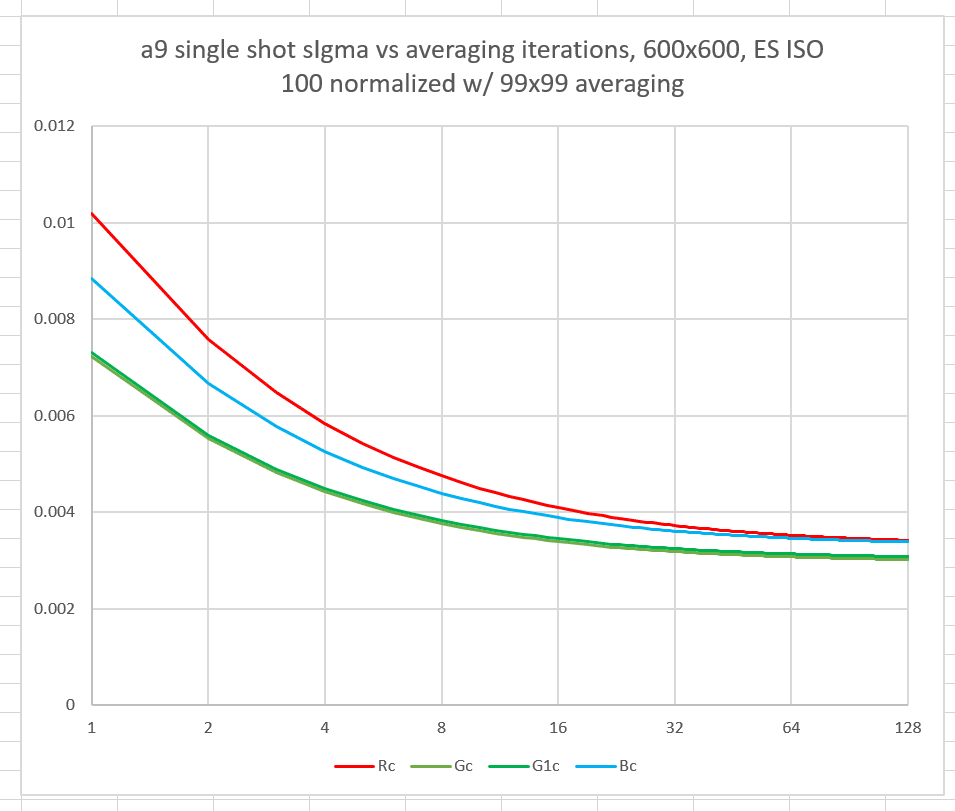
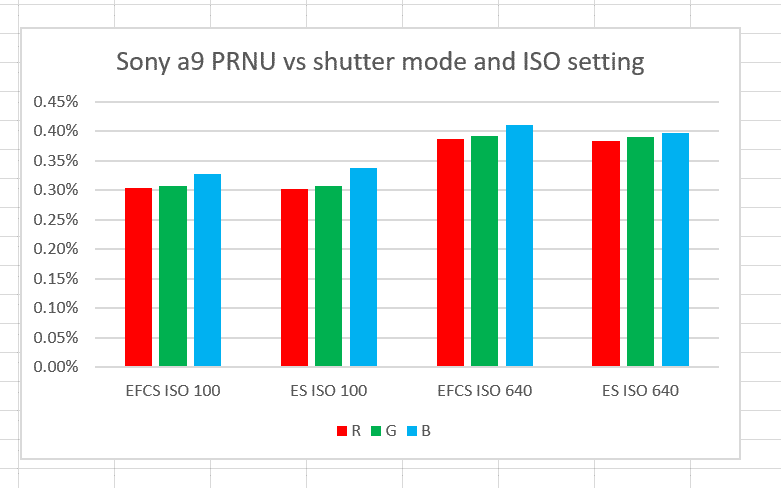

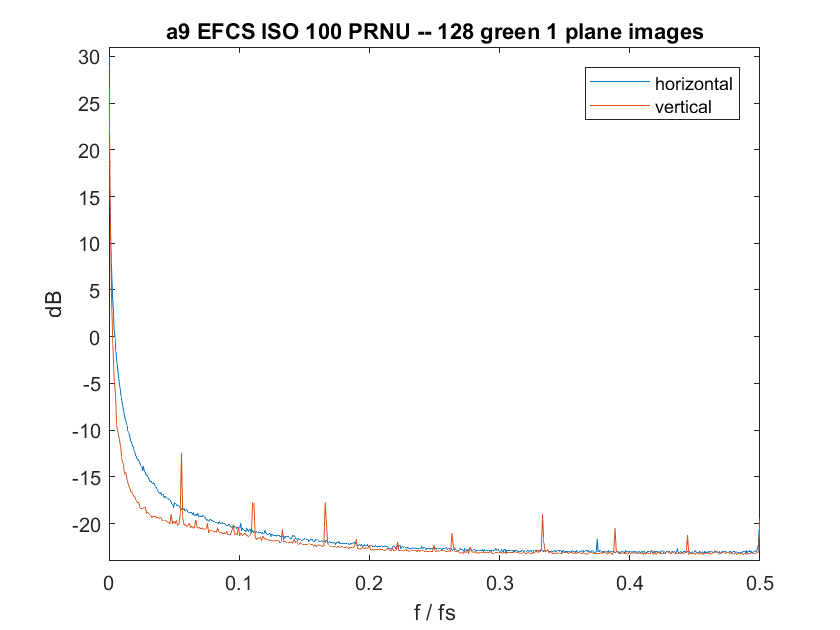

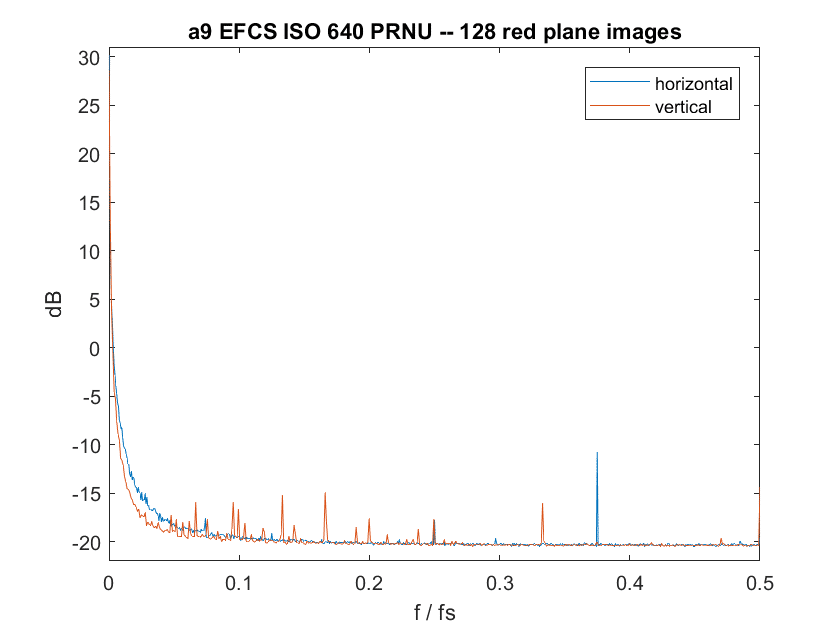

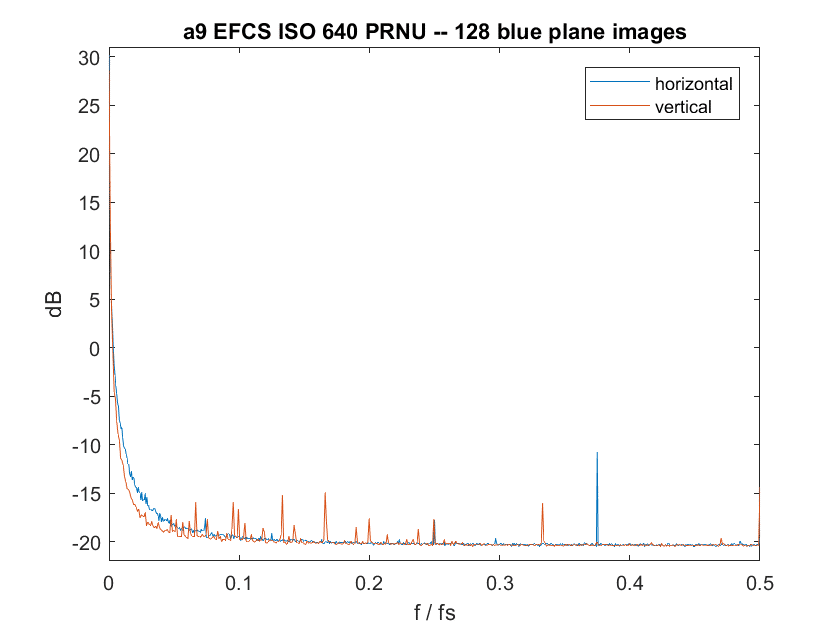
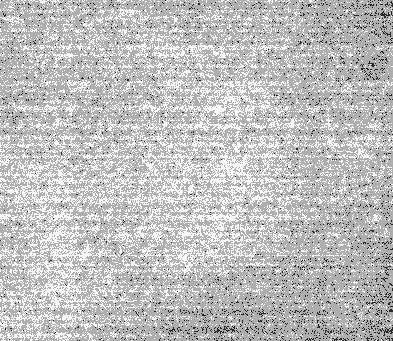
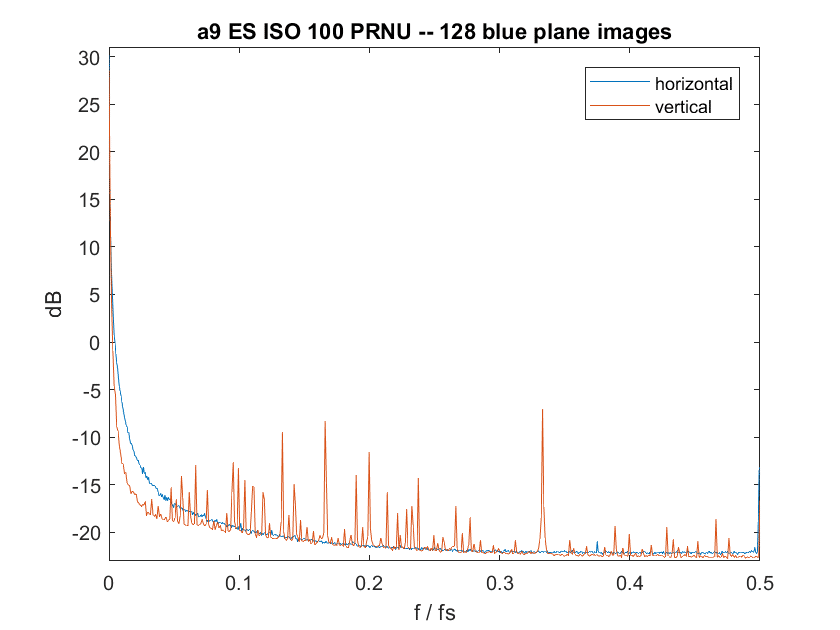
If there was noise being added that by each of the multiple ADC per column there is a chance that it too could average out over time so combining 128 shots could mask the effect. 128 shots would also tend to slowly increase the temperature of the sensor adding to overall read noise which could further mask any patterned noise. What does it look like for a single shot or even 5 shots averaged
The patterning is much less for single shots, because the frame-to-frame variant noise is present, and it has less FPN. If you poke around the site you can find Fourier analyses of singe shots. The averaging out of the frame-to-frame variant noise is precisely the reason for averaging 128 shots.I watch the noise in the average decrease as each shot is added so I know when Ive got enough. The pattern in FPN does not vary much with small temperture changes.